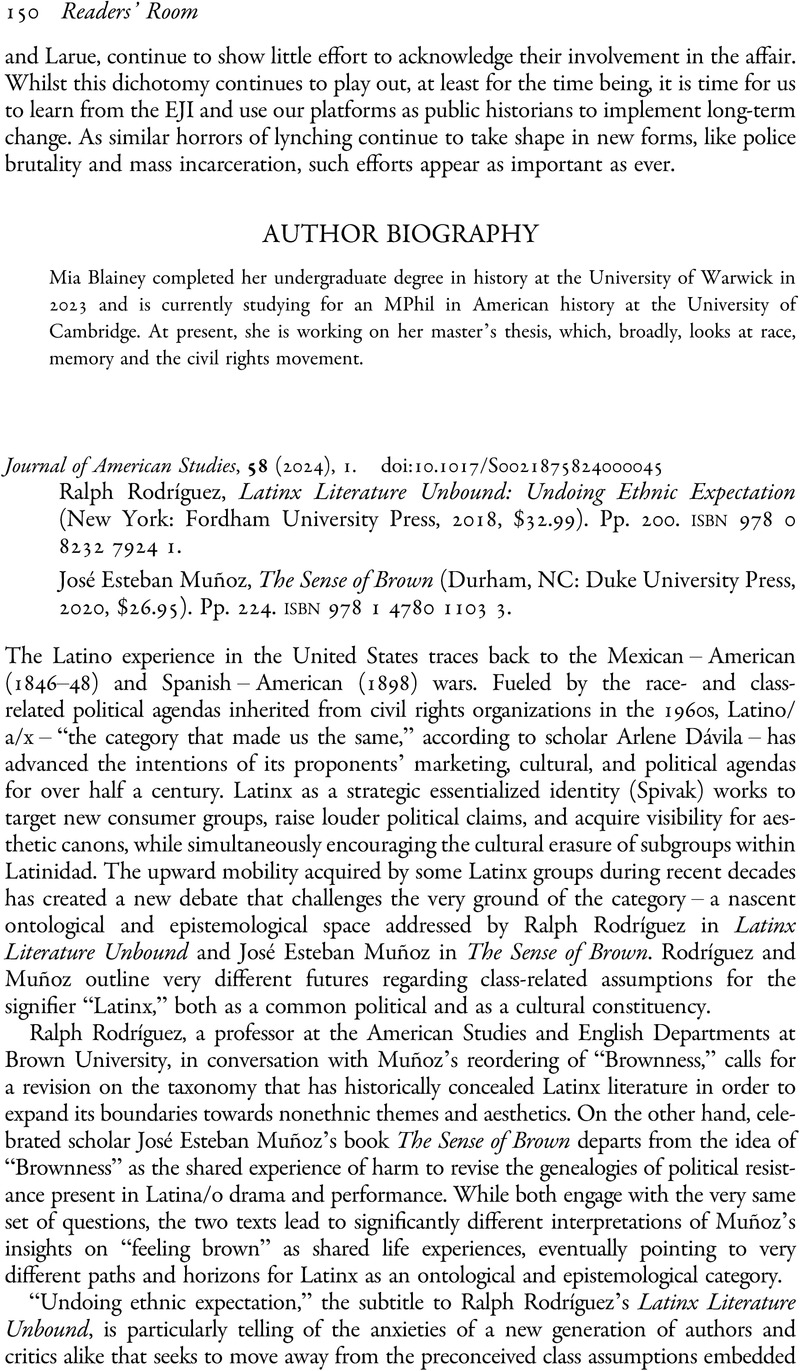No CrossRef data available.
Article contents
Ralph Rodríguez, Latinx Literature Unbound: Undoing Ethnic Expectation (New York: Fordham University Press, 2018, $32.99). Pp. 200. isbn 978 0 8232 7924 1. - José Esteban Muñoz, The Sense of Brown (Durham, NC: Duke University Press, 2020, $26.95). Pp. 224. isbn 978 1 4780 1103 3.
Review products
Ralph Rodríguez, Latinx Literature Unbound: Undoing Ethnic Expectation (New York: Fordham University Press, 2018, $32.99). Pp. 200. isbn 978 0 8232 7924 1.
José Esteban Muñoz, The Sense of Brown (Durham, NC: Duke University Press, 2020, $26.95). Pp. 224. isbn 978 1 4780 1103 3.
Published online by Cambridge University Press: 07 May 2024
Abstract
An abstract is not available for this content so a preview has been provided. Please use the Get access link above for information on how to access this content.

Information
- Type
- Readers' Room
- Information
- Copyright
- Copyright © The Author(s), 2024. Published by Cambridge University Press in association with British Association for American Studies


